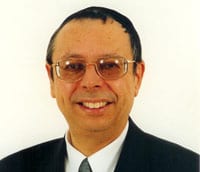Kabbala versus Kabbollywood
Here is more to read besides this article about the Kabbalah Center cult...... http://israeljewsjudaism.blogspot.com/search?q=kabbalah#.T72PyZ9SR0U
by Rabbi Chaim Ingram
Read on for article
Both as a parent and as a teacher, I have come to know that there is no purer relationship than that of a child to G-D…writes Rabbi Chaim Ingram.
When he learns Modeh Ani he will sing it lustily and unselfconsciously in a tune he knows (”You Are My Sunshine”) or in a language he knows (“Thank You HaShem for giving me a brand new day for work and rest and play!”). His connection to G-D is sweet and innocent, direct and natural – and that is a quality we can learn from our tiny children/grandchildren because that is the relationship we should all be enjoying with the One Above.
The sober reality is that as we grow into adulthood, as we become hardened and cynical, we need to find new adult ways of rediscovering that pure relationship with G-D.
The prophet Hoshea (8th century BCE) in this week’s Haftara evocatively and dariingly compares the relationship of G-D and recalcitrant Israel to the love of a husband for the wife of his youth who was unfaithful but whom he still loves unconditionally. The Haftara ends with not only reconciliation but a cementing of the love bond. “And I shall betroth you to Me forever … with fidelity and you shall know Me intimately again, says G-D” (Hoshea 2:22). Centuries earlier, in Shir ha-Shirim, King Solomon had explored this theme allegorically. Now Hoshea does it overtly.
The Lekha Dodi poem with which we welcome Shabbat, composed by the 16th century Rabbi Shlomo haLevi Alkabets, takes the theme a bold stage further. According to one interpretation, the central motif of the poem is the reuniting of G-D and His Shekhina (Indwelling Presence) in Jerusalem, site of the Temple; or the unification of the first two and the last two letters of the Ineffable Four-Letter Name of G-D (Tetragrammaton). (Have you never wondered why most of the stanzas don’t relate to Shabbat at all?)
Knowing G-D intimately, bonding with Him in pure love, understanding His Essence as best we can within the realms of our finitude – this is the warp and woof of Jewish mysticism or Kabbala.
On Shavuot the Haftara we read features the seminal mystical vision by Ezekiel of the D-vine Chariot (merkava), the four-headed phenomenon encompassing the very throne of G-D, a vision which forms a foundation for Kabbala. It is regarding this that the Rambam declares it is not appropriate for a person to “stroll around” (letayel) in the pardes, in the orchard of secret knowledge of the D-vine until he or she is filled with the bread and meat of the revealed knowledge – Tanakh, Mishna, Gemara and Halacha. He cites the well-known Talmudic story (Chagiga 14b) of the four great Tannaim (Mishna rabbis) who entered the pardes (orchard) of concealed wisdom. Ben Azzai glanced and lost his life.. Ben Zoma glanced and lost his mind.. Elisha ben Avuya glanced and lost his faith. Only Rabbi Akiva emerged unscathed.
The Rambam’s expression letayyel according to the Baal haTanya “implies study in depth”. There is little danger that the average contemporary Jew accessing a Kabbala course of any description will be engaging with the discipline any more than superficially. Still there are other factors. How does one know that the Kabbala one will be studying is authentic. Rabbi Jonathan Sacks’ coinage of the word “kabbolywood” sums up the populist, result-orientated type of pseudo-Kabbala that has seduced people from all walks of life including the movie and popular music industry. How does one tell ersatz Kabbala from the real thing?
The ‘definition’ proffered on the homepage of the Los Angeles-based Kabbalah Centre website gives us a clue. “Kabbalah” it drawls “is an ancient wisdom that provides practical tools for creating joy and lasting fulfilment” This is the ‘what’s in it for me’ nerve-centre of Kabbollywood which seeks to use and abuse the “ancient wisdom” for personal gain. To revert to the love-imagery we cited before: it is the metaphysical equivalent of one partner in a marriage exploiting another – the opposite of love.. Perhaps worse. For in this sort of utilitarian ‘Kabbala’, the Jewish G-D has no place. Co-director of the Centre Yehuda Berg illustrates this by writing a 251-page book purporting to explain Kabbala where the word G-D isn’t mentioned once!
No part of Torah is more refined, more pure, more holy than genuine kabbala. Consequently no Torah discipline requires greater purity of soul and intention. And no Torah discipline is subject to greater abuse.
http://www.jwire.com.au/featured-articles/kabbala-versus-kabbollywood/25174

No comments:
Post a Comment